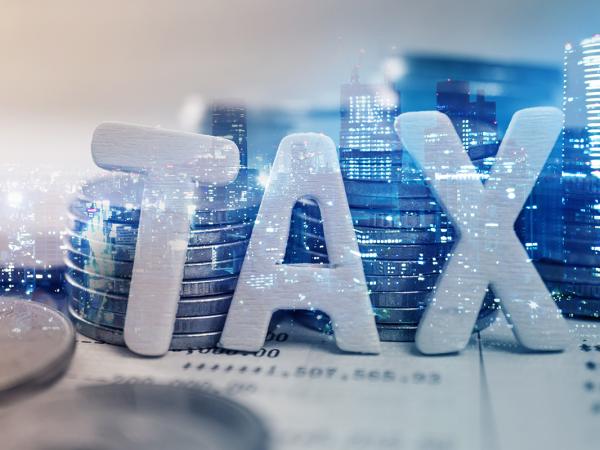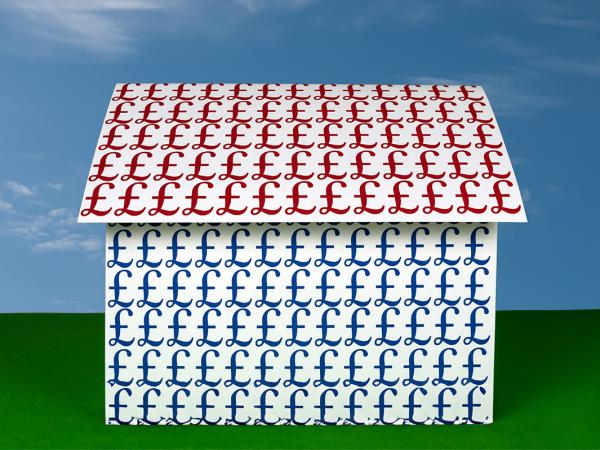Trading allowance
The trading allowance is available to those with trading or miscellaneous income. The allowance is sometimes also known as the trading and miscellaneous income allowance, or hobby allowance. On this page, we look at when you are entitled to the trading allowance and how it is applied.

Content on this page:
How it works
The trading allowance is a tax free allowance for casual and/or miscellaneous income of up to £1,000 per tax year. The allowance can be used against any trading, casual or miscellaneous income and means that you do not pay tax or National Insurance on the income that is covered by the allowance. This might include income from what is often known as the ‘sharing economy’ – for example, car sharing – or perhaps against income arising from hobby activities which are in the process of developing into a more commercial business. It might also be relevant to those working in the gig economy.
You can use the trading allowance as well as the personal allowance. It is not an automatic allowance like the personal allowance, and so may need to be specifically claimed in some circumstances.
You are entitled to claim the trading allowance if either:
- you use the cash basis of accounting, or
- you use the accruals basis of accounting but are eligible to use the cash basis.
On this page only we will now refer to trading income to cover trading, casual and miscellaneous income.
The trading allowance is available even if you have only traded for part of the tax year. For example, if you started to trade in February 2024 you would still be able to claim the full amount of the trading allowance as if you had been trading for the entire 2023/24 tax year.
If your trading income is £1,000 or less
On this page only we will now refer to trading income to cover trading, casual and miscellaneous income.
If your total (gross) trading income in the tax year is £1,000 or less, then the whole of this income can be covered by the trading allowance. This is known as full relief. You should be able to calculate your total income from your business records.
It is important that you look at total (gross) trading income to see if it is £1,000 or less. We explain under the heading Gross trading income below when you might find it difficult to identify your ‘gross’ trading income, particularly if some expenses such as selling fees are deducted before the income is paid into your bank account.
If the trading allowance is more than the trading income, no trading loss is created.
If this is your only income, you do not need to make a formal claim for the allowance and you do not need to register your self-employment with HM Revenue & Customs (HMRC) or complete a self assessment tax return. If you are already registered to complete a tax return, then contact HMRC to see if you still need to complete it.
However, there may be circumstances where you may still want to register for self-employment, even if you don’t have to, for example:
- because you want to pay voluntary Class 2 National Insurance contributions (NIC) (you may want to do this to build up your entitlement to certain state benefits, such as the state pension, maternity allowance and contribution-based employment and support allowance),
- because you want a record of your self-employment for maternity allowance, or
- because you would like to claim tax-free childcare.
If you need to complete a self assessment tax return for another reason (see Who has to complete a tax return), then you enter your trading allowance on page 1 of the self-employment (short) pages (SA103S) of the tax return by completing box 10.1 to show the amount you are claiming.
You should still keep records of your trading income and expenses so you can work out whether you are entitled to use the trading allowance, and if so, whether you want to do so.
Please note that even if you do not have to report this income to HMRC you may still need to report it for some means-tested benefits, such as universal credit.
If your trading income is more than £1,000
On this page only we will now refer to trading income to cover trading, casual and miscellaneous income.
If your total gross trading income (before deducting any expenses) in the tax year is more than £1,000 you can choose to deduct the trading allowance from the trading income instead of deducting your actual business expenses for the period. If you do this, the taxable profit from the activity will simply be the total income less the trading allowance. Claiming the trading allowance in this way is called partial relief.
It may be beneficial to claim the trading allowance in this way if you do not have very high expenses related to the activity. It also means that you do not need to prepare any business accounts for tax purposes.
If you are claiming partial relief, then you will not be able to claim tax relief for any pre-trading expenditure.
It will still be necessary to keep business records as you will need to know what your trading income is, and it is helpful to know what your business expenses are to be able to work out whether you wish to claim the trading allowance.
As your income is above the trading allowance, HMRC say you must register your self-employment and complete a self assessment tax return. You enter the trading allowance on page 1, box 10.1 on the self-employment (short) pages (SA103S) of the tax return. If you need to register for self assessment for the first time due to this income, see our page Self-employment: registering for tax and NIC.
Please note that even where you do not have to report this income to HMRC, you may still need to report it for some means tested benefits, such as universal credit.
Gross trading income
Gross trading income means all your trading, miscellaneous and casual income before taking off any expenses.
Identifying the ‘gross’ amount of income can sometimes be tricky, particularly if charges are deducted before receiving the income directly into your bank account. Examples of such charges could be selling fees or transaction costs charged by a platform or even tax under the Construction Industry Scheme (CIS).
Be extra careful when using apps to track your income, expenses and manage income tax.
If the app picks up the information directly from your bank account, there is a possibility it will record income which has had expenses deducted before it is paid into the bank (such as the 15% selling fees in the example of Gabby above). The app will then produce an inaccurate calculation of your gross income which could lead to an incorrect claim for the trading allowance.
More than one source of trading income
If you have more than one type of trading, casual or miscellaneous income you can still only claim one trading allowance. However, you can choose how to allocate the allowance between your income sources. This is best illustrated by the examples of Reece and Jay below. But remember you cannot claim tax relief for business expenses when you claim the trading allowance, so the effect of this needs to be considered too. It may not be beneficial to claim the trading allowance at all.
If the trading allowance is not relevant to you, then you will need to prepare a set of accounts for your business and then make tax adjustments for business expenses that are not ‘allowable’ and for capital allowances.
Reasons not to claim
It may not be beneficial to claim the trading allowance in certain circumstances. These include:
- You have business expenses greater than £1,000. In this case, you will have less taxable profit if you deduct your expenses from your trading income rather than the trading allowance and therefore will pay less tax.
- You have made a trading loss. If your expenses are greater than your income, it will be beneficial to complete a self assessment tax return and make a claim for the losses rather than use the trading allowance. You cannot use the trading allowance to make a loss.
- You have more than one trading business and/or type of casual income. In this case you need to ensure that your total expenses are less than £1,000 otherwise you could end up paying more tax (see the examples of Reece and Jay under the heading More than one source of trading income, above).
Incorrectly claimed the trading allowance
As explained under the Gross trading income heading above, it may be the case that the income you receive has had amounts taken off before you received it and so it could be different to your gross income for the trading allowance. If you (or your app) have taken the amount from your bank statements as gross trading income, this might have been incorrect when working out how the £1,000 trading allowance applies.
If you have claimed the trading allowance incorrectly, perhaps by using full relief when your gross income is actually above £1,000, as in the example of Gabby above, then you need to make sure you correct your tax position as soon as possible.
This may mean you have to register your self-employment with HMRC and complete a tax return to declare the income. There may be penalties if you have missed the deadline for telling HMRC that you need to complete a tax return. If you are in this position and on a low income, contact TaxAid for help in getting your tax affairs up to date.
If you already complete a tax return for other reasons and claimed ‘full relief’ using the trading allowance by mistake, you will need to amend your tax return to include this income. You can however, then claim ‘partial relief’ of the trading allowance instead of actual expenses as explained under the heading If your trading income is more than £1,000, above.
You will also need to amend your tax return if you have incorrectly claimed ‘partial relief’ against income that has already been reduced by actual expenses.
Tax credits and universal credit
If you claim tax credits, the income used to calculate your tax credits should be after taking account of any deduction for the trading allowance. This is because the information about your income which you provide to HMRC for your tax credits claim will generally be the same as the information you use when completing your self assessment tax return.
If you do not need to register your trading income with HMRC because it is under £1,000 then you will not need to let the HMRC tax credits team know about it either.
Universal credit (UC) works differently, and you cannot deduct the trading allowance when providing your income to the Department for Work & Pensions (DWP). The income used when calculating your UC will be higher than the income used when calculating your tax as the trading allowance is ignored when calculating your UC claim.
Student loan repayments
If you claim the trading allowance and you are repaying your student loan, then the income used to calculate your student loan repayments will be the amount after the trading allowance has been deducted.
In other words, the calculation of your loan repayments follows the tax treatment of your trading and casual income. So, if you have a Plan 2 loan and employment income of £29,000 and casual income of £750 which is fully relieved by the trading allowance, only £29,000 (and not £29,750) will be used when calculating your student loan repayments above the repayment threshold.
More information
Our guide to self-employment is intended to supplement the material in this section. We wrote this guide to help advisers (non-tax) who advise low-income self-employed individuals and for self-employed people who want more detailed information in one accessible place. The guide explains the less common tax rules and contains more detailed information, including a case study showing how to prepare accounts, what to include on your 2023/24 tax return, how to treat pre-trade expenses and how to use the cash basis.
We cover examples of miscellaneous income on our taxable income page.
GOV.UK has information on keeping business records if you claim the trading allowance and there is further information on the trading allowance on HMRC’s Business Income Manual on GOV.UK.



